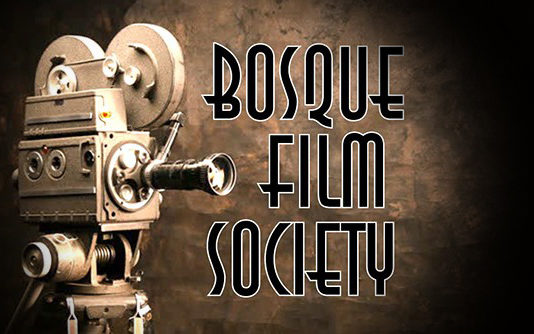Stepping back in time to watch the modern classic 1973 buddy con man caper film “THE STING” on the silver screen at the historic Cliftex Theatre in Clifton
By ANGELA SMITH
Bosque Film Society Founding Board Vice President
“What was I supposed to do? Call him for cheating better than me, in front of the others?”
As most of our Bosque Film Society members know, The Cliftex Theatre opened in 1916 and holds the title of the longest continuously operating movie house in Texas. A total restoration of the theater was completed in 2008 and brings back many of the features of the Cliftex in 1935, making it the perfect setting for tonight’s presentation of The Sting, an American heist film set in Chicago, September 1936.
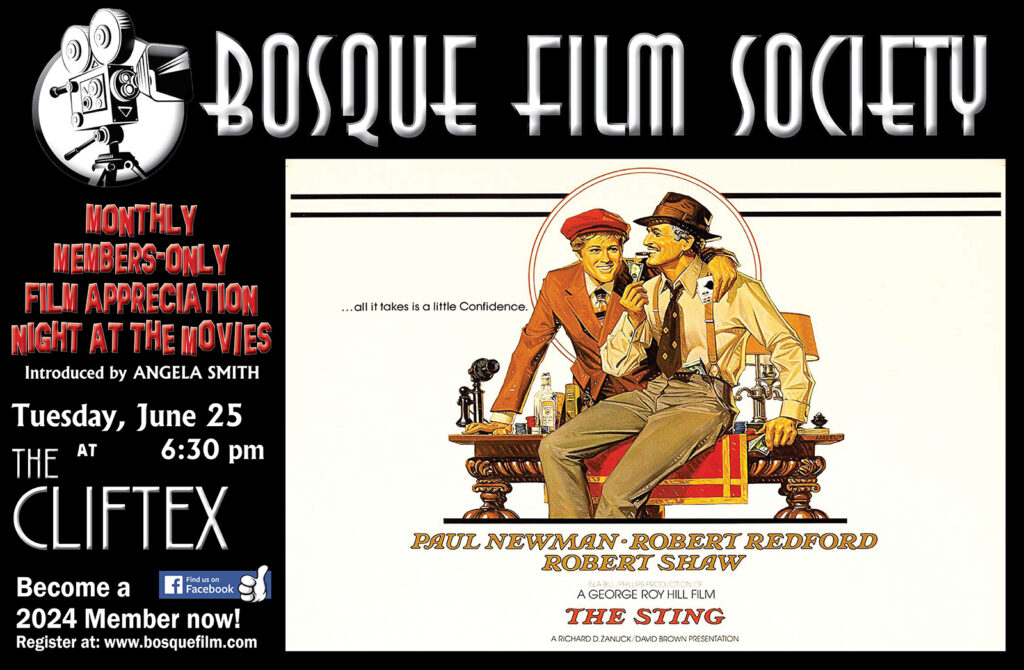 THE PLAYERS
THE PLAYERS
“Redford and Newman are at it again.”
But that wasn’t the original plan. Jack Nicholson was first offered the lead role but turned it down. Paul Newman signed on after the producers agreed to give him top billing, $500,000, and a percentage of the profits. While shooting The Mackintosh Man in Ireland, Newman sent the script to Robert Shaw, encouraging his participation.
The film was directed by George Roy Hill, who had previously directed Newman and Redford in Butch Cassidy and the Sundance Kid, and it was written by screenwriter David S. Ward, who was inspired by the real-life cons perpetrated by brothers Fred and Charley Gondorff documented by David Maurer in his 1940 book The Big Con: The Story of the Confidence Man. Ward stated in an interview that he was inspired to write The Sting while he was researching pickpockets, realizing he had never seen a film about a con man.
Years later, director Rob Cohen reported he found the script in the slush pile when working as a reader for Mike Medavoy, a future studio head, but at the time an agent. Cohen wrote in his coverage that it was “the great American screenplay and … will make an award-winning, major-cast, major-director film.” Medavoy said that he would try to sell it on that recommendation, promising to fire Cohen if he couldn’t.
Universal bought it that afternoon.
David Maurer sued for plagiarism, claiming the screenplay was based too heavily on his book, and Universal settled out of court for $600,000.
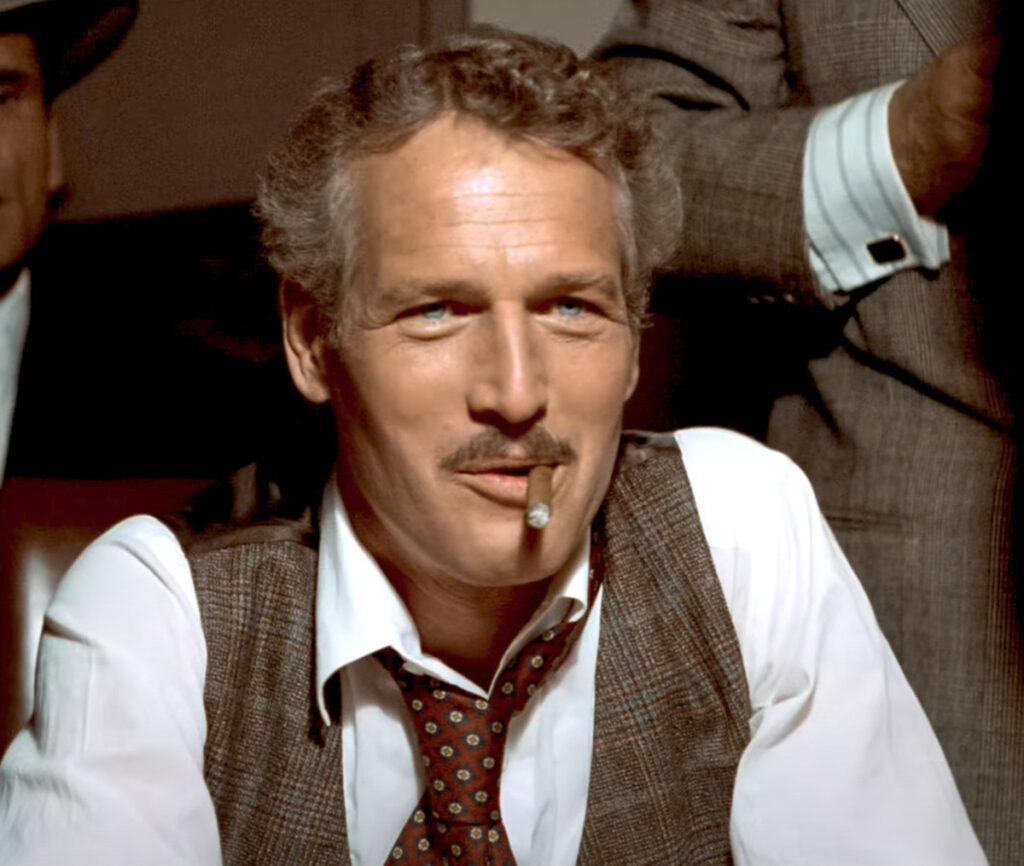
THE TELLING
A subgenre of crime films, a heist or caper film focuses on the planning, execution, and aftermath of a grand theft – The Sting.
In contrast to other crime films, a heist film almost exclusively follows those committing the crime instead of whoever is trying to stop them, often leading the audience to develop sympathy or respect for the criminals. Another common characteristic is the building of a team to pull off the crime, with each member contributing a unique skill or trait needed to complete the job.
The period between 1955-1975 is considered by scholars to be the most productive for the heist genre. The 1990s brought a resurgence in popularity with films like Sneakers also starring Robert Redford, Heat and The Usual Suspects; leading to a plethora of heist films in the 2000’s including Inside Man, The Italian Job, Ocean’s Eleven and its sequels, and recent releases Wrath of Man, The Misfits and Dungeons and Dragons: Honor Among Thieves.
THE SETTING
There are images in The Sting that remind me of a Rembrandt painting: the powerful man in his fine suit with a deep, dark background in his portrait-stylized close-up. Balanced with the vibrant colors of wide ties and carousels. Director George Roy Hill wanted the film to be reminiscent of movies from the 1930s and – along with art director Henry Bumstead and cinematographer Robert L. Surtees – Hill devised a color scheme of muted browns and maroons for the film and a lighting design that combined old-fashioned 1930s-style lighting with some modern tricks of the trade to get the visual he desired.
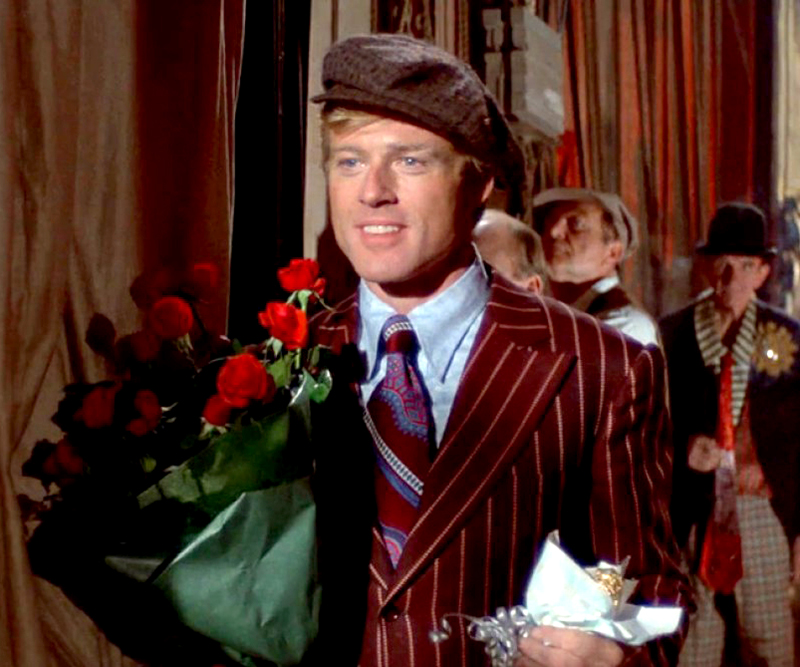 Another tool that Hill used in recreating the 1930s ambiance was a casting mechanism. Andrew Horton’s book The Films of George Roy Hill quotes Hill as saying, “no extras would be used in street scenes in those films – Jimmy Cagney would be shot down and die in an empty street. So, I deliberately avoided using extras.”
Another tool that Hill used in recreating the 1930s ambiance was a casting mechanism. Andrew Horton’s book The Films of George Roy Hill quotes Hill as saying, “no extras would be used in street scenes in those films – Jimmy Cagney would be shot down and die in an empty street. So, I deliberately avoided using extras.”
The talented Edith Head designed a snappy period wardrobe for the cast, considered among her finest efforts. Head won her eighth and final Oscar for The Sting; and in her acceptance speech at the Academy Awards, she stated ”Just imagine, dressing the two handsomest men in the world, and then getting this.”
Other artistic elements that set the film apart include details that emphasize and intertwine both the period and the film’s form:
- The distinct acts easily transition with old-fashioned title cards drawn by artist Jaroslav “Jerry” Gebr in a style strikingly reminiscent of the period popular magazine the Saturday Evening Post.
- The automobiles. An antique car buff, co-producer Tony Bill assisted in acquiring several period cars for the film, including his own 1935 Pierce-Arrow limousine, which served as Lonnegan’s private car.
- It’s quite impossible to think about The Sting without its soundtrack of ragtime, particularly the melody “The Entertainer” by Scott Joplin, which was adapted (along with other Joplin pieces) for the film by Marvin Hamlisch. The film’s success created a resurgence of interest in Joplin, who was born just outside of Texarkana around 1867 and who is considered “The King of Ragtime.” One of his first pieces, the “Maple Leaf Rag” (1899), has been recognized as the archetypal rag and influenced subsequent rag composers with its rhythmic patterns, melody lines and harmony.
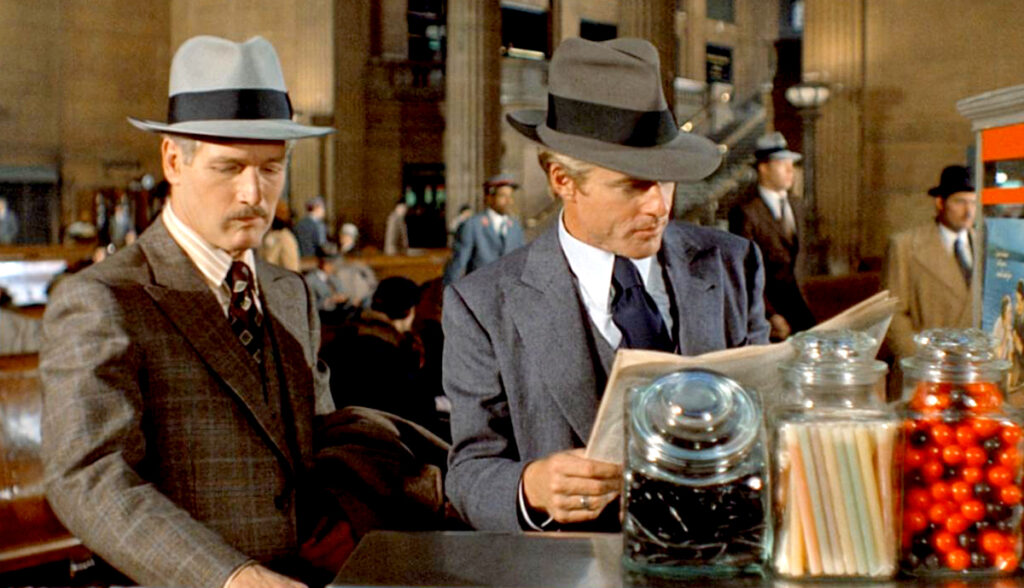 THE RECEPTION
THE RECEPTION
The Sting was released on Christmas of 1973 and immediately became a box-office sensation in 1973 and early 1974, grossing $156 million in the United States and Canada. As of August 2018, it is the 20th highest-grossing film in the United States adjusted for ticket price inflation, with a worldwide gross of $257 million.
In addition to financial success, The Sting received critical acclaim and was incredibly successful at the 46th Academy Awards, nominated for ten Oscars and winning seven: Best Picture (producers Tony Bill, Julia Phillips and Michael Phillips); Best Director (George Roy Hill), Best Film Editing (William Reynolds); Best Original Screenplay (David S. Ward); Best Art Direction (Henry Bumstead and James W. Payne); Best Costuming (Edith Head); and Best Score (William Hamlisch).
Redford was also nominated for Best Actor, but lost to Jack Lemmon for Save the Tiger. Fellow nominees were Marlon Brando, Jack Nicholson and Al Pacino. The film rekindled Newman’s career following a series of cinema losses.
Roger Ebert gave the film four out of four stars and called it “one of the most stylish movies of the year”. Gene Siskel awarded three-and-a-half stars out of four, calling it “a movie that has obviously been made with loving care each and every step of the way.” Vincent Canby of The New York Times wrote that the film was “so good-natured, so obviously aware of everything it’s up to, even its own picturesque frauds, that I opt to go along with it. One forgives its unrelenting efforts to charm, if only because The Sting itself is a kind of con game, devoid of … poetic aspirations.”
Regarded as having one of the best screenplays ever written, The Sting was selected in 2005 for preservation in the U.S. National Film Registry of the Library of Congress as being “culturally, historically, or aesthetically significant”. It was followed by a sequel in 1983, The Sting II.
